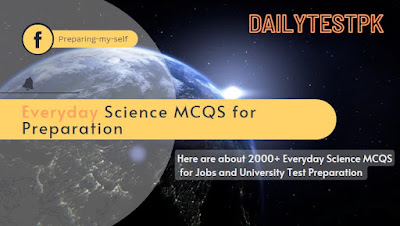1. Neil A. Armstrong visited the moon on july 16, 1969 and remained there for 21 hours and 36 min. Name the manned spacecraft which took him on this mission ?
a. U.S Gemini 12
b. USSR Soyuz 5
c. U.S Apollo 2
d. U.S Apollo 9
2. How much time the light takes to reach from the sun to the
earth?
a. Four minutes and 30 sec
b. eight min and 15 sec
c. Seven min and 15 sec
d. Six min and 30 sec
3. Astronomical unit is a bigger unit of distance and it is used to measure distance btw the heavenly bodies of the solar system .One astronomical unit is equal to how much Km in whole numbers?
a. 50 million km
b. 100 million km
c. 150 million km
d. one million km
4. Name the nearest Star to our sun.
a. Proxima Centurai
b. Alpha Scorpii
c. Beta Orionis
d. Vega
5. Name the nearest regular galaxy to our milky way
a. NGC 185
b. Small Magellanic
c. Large Magellanic Cloud
d. Andromeda
6. Name the largest moon in our solar system
a. Ganymede
b. Titan
c. Callisto
d. Miranda
7. Atmosphere of the earth is made up of different spheres. In which part of the atmosphere commercial aircrafts usually fly.
a. Thermosphere
b. Stratosphere
c.. Troposphere
d. Mesosphere
8. The sun raised on the North pole on the 21st march and this pole remains in
light till what date ?
a. 23rd sep
b. 21st sep
c. 22nd june
d. 22nd dec
9. Name the gas which was discovered on the sun about 125 years ago
during eclipse-watching..
a. Hydrogen
b. Helium
c. Nitrogen
d. Argon
10. What is the approximate age of the sun ?
a. 6.4 thousands years
b. 6.4 billion years
c. 6.4 million years
d. 6.4 hundred thousands years
01. Jupiter is the fifth planet from the sun. It is named after the greatest of the roman gods. It is much bigger than Earth. About how many earths would equal to one Jupiter ?
a. 100
b. 500
c. 700
d. 1000
02. Physicists have known about these high energy invisible rays for 80 years , but their precise nature is still a mystery. they come from unknown parts. they pack a mean energy. And they seem to break the laws of physics. Name them.
a. X-rays
b. UV-rays
c. Visible rays
d. Cosmic rays
03. Faster than a speeding bullet, more powerful than a supernova, able to crush small planets with a single swipe these are primordial, angel-hair thin cracks in the structure of the space. Name them
a. Cosmic strings
b. Saturn rings
c. Newton`s rings
d. Black holes
04. Name the instrument which is used to measure the speed of an
aircraft relative to the speed of sound.
a. Speedometer
b. Altimeter
c. Telemeter
d. Machmeter
05. A layer of Ozone in the stratosphere protects the earth by blocking most of the sun`s harmful ultraviolet light. These are high energy radiations. Which of the following can have the potential effect of UV light.
a. Eyes
b. Skin
c. Crops
d. All the above
06. For growth , Viruses require
a. Dead host
b. Living host
c. Minerals
d. Simple sugars
07. In which of the following are Mitochondria absent ?
a. Fungi
b. Andiosperms
c. Green algae
d. Blue-green algae
08. Eukaryotic organisms are those that contains
a. DNA threads
b. Plastids
c. True nucleus
d. Vacuoles
09. The melismatic cells are
a. Thin walled
b. Isodiametric
c. Richly protoplasmic
d. All of above
10. The deficiency of which of the following micronutrients causes the
death of the stem and root apices ?
a. Boron
b. Copper
c. Manganese
d. Zinc
11. Plant development is influenced by
a. Quality of light
b. Quality and quantity of light
c. Quality and duration of light
d. Quality , quantity and duration of light
12. Critical day length Varies from plant to plant and lies between
a. 6 to 100 hours
b. 8 to 12 hours
c. 10 to 14 hours
d. None of above
13. ATP is
a. An enzyme
b. A hormone
c. A protein
d. A molecule containing high energy bonds
14. The primary producers of organic matter in nature are
a. Bacteria
b. Fish
c. Green plants
d. Human beings
15 . Edible part of tomato is
a. Endocarp
b. Fleshy thalamus
c. Mesocarp
d. Whole fruit
16. Who amongst the following, started in 1850, a scientific approach to determine the role of mineral elements in the healthy growth and development of plants ?
a. Arnon and Knop
b. Sachs and Knop
c. Sachs and Stout
d. Arnon and Stout
17. The primary plant body consists of how many tissue systems ?
a. 2
b. 3
c. 4
d. 5
18. Bamboo is a
a. Herb
b. Grass
c. Shrub
d. Three
19. Cork cells are impervious to water because of the presence of
a. Cellulose
b. Cutin
c. Lignin
d. Suberin
20 . Ethylene is a hormone concerned with
a. Respiration
b. Ripening of fruits
c. Cell division
d. None of the above
21. The cavity of Ascaris is known as
a.
b. Haemocoel
c. Pseudocoel
d. Visceral cavity
22. Crura-cerebri is found in
a. Fore-brain
b. Hind-brain
c. Mid-brain
d. None of above
23. Man is
a. Biothermic
b. Homoiothermic
c. Oilgothermic
d. Poikilothermic
24. The compound eye of insect produces
a. Binocular vision
b. Monocular vision
c. Mosaic vision
d. None of above
25. The post embryonic stages in the life history of cockroach is known
as
a. Caterpillar
b. Grubs
c. Larval
d. Nymohs







0 Comments
if have any questions Suggestion. Please comment below!